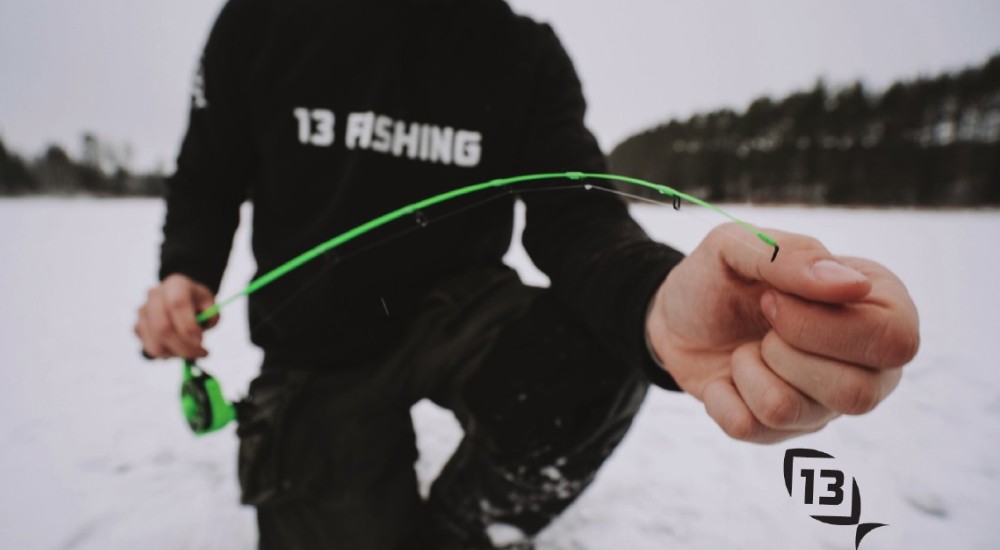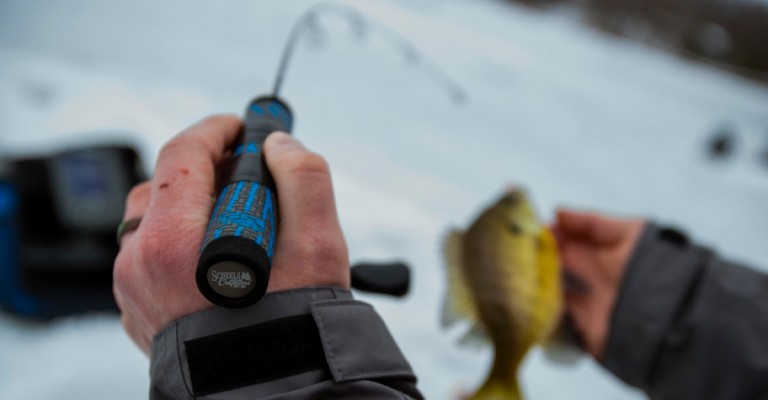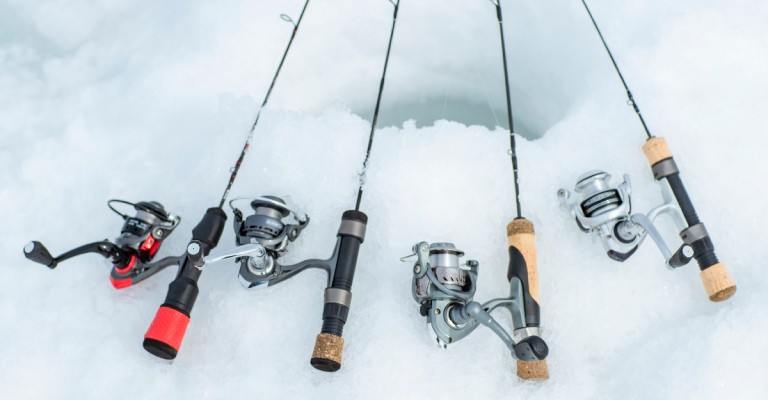How to Choose an Ice Rod

Whether you’re new to ice angling or a seasoned pro, you won’t be successful on the ice without the right ice fishing rod. With so many options available for ice rod power, action, and length, it can be difficult to know which rod is best for your target species. Learn about the different ice rod styles and find the right rod for you whether you’re ice fishing for walleye, panfish, or pike.
Ice Fishing Styles: Jigging vs. Deadsticking
Before choosing an ice rod, it’s important to understand the difference between the two most common ice fishing styles: jigging and deadsticking. While jigging, you move the rod up and down to move your bait and attract nearby fish to strike your lure. In deadsticking, you attach live bait to your hook and let it swim around, only moving the rod sparingly. Deadsticking also refers to fishing with your ice rod in a rod holder or tip-up, since these also create limited rod movement.
Determining your preferred style of ice fishing is important, as each style has different demands on the rod. Many anglers choose to have a few rods for each style to give them versatility. For example, it’s common to have a jigging ice rod to hold in your hand and a couple deadsticking rods to set up in a rod holder or tip-up, allowing you to effectively fish out of more holes with fewer anglers.
Ice Rod Power

One of the most important things to consider when choosing an ice rod is the rod power. Power indicates the amount of force needed to bend the blank—the lighter the power, the smaller the fish that will bend the rod when it bites. Rod power is indicated as ultra-light, light, medium, heavy, or in-between measurements like light-medium or medium-heavy. Some ice rod manufacturers also list their rods as “noodles,” which usually indicates a light power rod.
It’s important to choose a rod with enough strength to support a fighting fish but enough sensitivity that you can still detect bites on the line. Most anglers choose their rod power based on their target species. Ultimately, the rod power will depend on the size of the target fish in the lake you’re fishing, so it’s often a good idea to bring a couple rods on the ice to give you plenty of options for power. For a quick reference to ice rod power and target species, check out the chart below:
| Ice Rod Power | Target Species |
|---|---|
| Ultra-light | Panfish: sunfish, bluegills, smaller perch & crappie |
| Light | Perch, crappie, and smaller walleyes |
| Medium Light | Walleye, larger crappie, jumbo perch |
| Medium | Walleye, whitefish, trout |
| Heavy | Northern pike, Lake trout |
Ice Rod Action

While ice rod power indicates the force needed to bend the rod, ice rod action indicates where along the blank (the part of the rod that extends from the handle to the tip) the rod will bend. Ice rod actions range from slow- to ultra-fast action. Slow rods bend closer to the handle, while faster rod actions bend closer to the tip.
Fast- and ultra-fast action rods bend at the tip from even light hits, allowing you to detect soft taps and bites on your bait. Since the flex is mainly at the tip, the rest of the blank provides plenty of strength and support when fighting fish. Because of their combination of sensitivity and strength, fast- and ultra-fast action rods are great for jigging.
Balls & Frisbees or finessed jigging. Because they bend closer to the handle than fast-action rods, medium action rods are more forgiving during aggressive hooksets.
Ice Rod Length
The length of an ice rod is largely determined by its power and action. Heavier and slower ice rods are generally longer to add strength to the backbone, while lighter, faster ice rods are shorter to make it easier to feel taps on the jig. Most anglers use rods ranging in length from 28- to 32-inches. However, if you’re fishing for heavier fish, you’ll want to choose a longer rod. Likewise, some anglers going after smaller species like panfish prefer a shorter rod length for extra sensitivity. While rod length can affect the feel of the rod, it’s ultimately up to individual preference—first, choose an ice rod with the right power and action, then consider your length options. Bowls & Feeders.
Before you head out on the ice, make sure you have the right ice rod for your target species, considering the rod power and action with your style of ice fishing. Have more questions about the best ice rod for you? Stop by your local ERLEBNISWELT-FLIEGENFISCHEN and talk to one of our ice fishing experts! Plus, find a reliable ice reel for your new rod with our expert’s picks for the best ice reels.